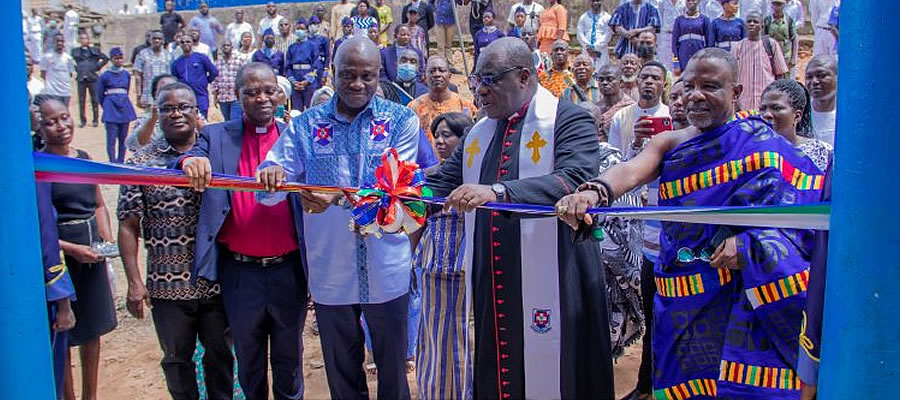

Location and Size
The district is located on the forest dissected plateau with Pre-Cambrian rocks of Birimean formation underlie this physiographic district. The land rises from about 700 feet in the western part to about 900 feet above sea level. The topography is very undulating subjecting it to erosion and therefore lowering the productivity of the land.The area is characterized by gentle rolling landscape with many rivers such as Tano River with many tributaries such as Kwasu, Anyinasu and Abu that exhibit a dendritic pattern of drainage. Tano and its tributaries converge at Asuhyiae which when developed could serve as tourist attraction. Most of the streams in the district dry-up during the dry season making them impossible to be used for irrigation.
Vegetation and climatic conditions
The district lies within the wet semi equatorial zone marked by double maxima rainfall in June and October with a mean annual rainfall of 1750mm. Temperatures are fairly high with a range between 260C in August and 300C in March which favours the cultivation of cocoa and many food crops.The vegetation of the area is mostly moist deciduous forest type, which does not differ much from the rainforest. Most of the trees shed their leaves during the dry season but not at the same time. Some economic trees found in the area are the sapele, odum, wawa and mahogany.
The district has two major forest reserves namely Disire Forest Reserve at the southern part of the district and the Tinte Beposo Forest Reserve located at the north-eastern part of the district. The farmlands and forest reserves are stocked with valuable timber like wawa, odum, sapele and mahogany. There are other forestry products like cane, fauna and trees of high medicinal value as seen in the Tinte Beposo West Extension Forest reserve and the Disire forest reserve. These resources offer opportunity not only for lumbering but also for the establishment of wood based industries like saw mills, cane weaving and others.
Geology and Minerals
The District is endowed with many natural resources, including the Birimian rock formation which is the most important geological formation in the country as it is the mineral bearing rock. A number of areas are reported to have deposits of minerals. These reported mineral deposits include gold at around Subriso and clay deposits at Mabang. There is a total of 520km road network in the District out of which 35km length is first class. The rest 485km are feeder roads most of which become unmotorable during the rainy season,thus hampering movement of people and goods.
Date Created : 12/5/2017 4:01:57 AM









 facebook
facebook
 twitter
twitter
 Youtube
Youtube
 +233 593 831 280
+233 593 831 280 0800 430 430
0800 430 430 GPS: GE-231-4383
GPS: GE-231-4383 info@ghanadistricts.com
info@ghanadistricts.com Box GP1044, Accra, Ghana
Box GP1044, Accra, Ghana